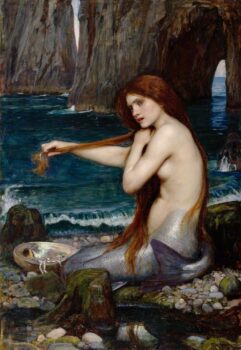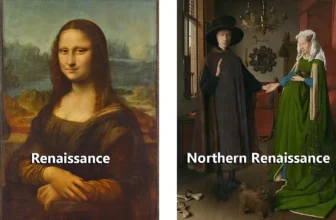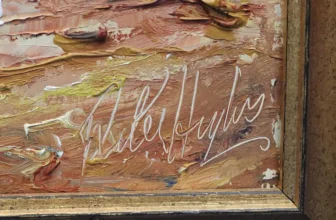The Symbolic Meaning of a Mermaid
Mermaids have captivated human imagination for centuries, appearing in folklore, art, and literature across cultures. Half-human, half-fish, they straddle the line between two worlds, the land and the sea, making them powerful symbols of duality, mystery, and transformation. But what do mermaids truly symbolize? How have they been depicted in art? And what is the oldest known mermaid artwork? This article delves into the depths of mermaid symbolism and explores their metaphorical significance throughout history.
Mermaids are rich with symbolic meaning, representing themes of beauty, danger, freedom, and transformation. Their ambiguous nature, being neither fully human nor entirely sea creature, embodies the struggle between different identities or realms.
1. Duality and Transformation
Mermaids often symbolize duality, existing in two worlds but belonging fully to neither. This makes them representations of change and transition, much like water itself, which is constantly in motion. Their half-human, half-aquatic form reflects the human experience of navigating different facets of identity, whether emotional, cultural, or existential.
2. Femininity and the Divine Feminine
In many cultures, mermaids are linked to the divine feminine, embodying beauty, fertility, and maternal instincts. They often represent the mysterious, unpredictable aspects of womanhood, mirroring the ocean’s depths. Their connection to water also ties them to intuition, emotions, and subconscious realms, making them powerful symbols of hidden knowledge.
3. Seduction and Danger
From Homer’s Sirens to Hans Christian Andersen’s tragic Little Mermaid, mermaids are frequently depicted as enchanting yet dangerous beings. They lure sailors with their beauty and song, leading them to their doom or transformation. This dual nature of attraction and peril reflects humanity’s fascination with the unknown and the risks of surrendering to temptation.
4. Freedom and Independence
Mermaids are often seen as symbols of independence and freedom, as they live in the boundless ocean, untethered by societal constraints. They embody the desire to break free from limitations, embracing adventure and the unknown. However, this freedom comes with isolation, as mermaids can never fully integrate into the human world.
5. Death and the Afterlife
Some cultures associate mermaids with death, acting as psychopomps who guide souls to the afterlife. In Slavic and Japanese folklore, water spirits resembling mermaids lure people to watery graves, signifying the ocean as a realm between life and death.
What Does a Mermaid Symbolize in Art?
Mermaids have been depicted in art for thousands of years, serving various symbolic purposes depending on the culture and era. Their artistic representations reflect changing societal views on femininity, nature, and the supernatural.
1. Ancient Art: Guardians and Divine Beings
The earliest known depictions of mermaids appear in ancient Assyrian art. The Assyrian goddess Atargatis, often considered one of the first mermaid figures, was depicted with a fish tail and worshiped as a goddess of fertility and water. Ancient Greek and Roman mosaics also feature nereids (sea nymphs), predecessors to modern mermaids, symbolizing divine beauty and protection over sailors.
2. Medieval and Renaissance Art: Religious and Moral Allegories
During the Middle Ages, mermaids appeared in illuminated manuscripts and church carvings, often representing sin and temptation. They were depicted with combs and mirrors, symbolizing vanity and the dangers of worldly desires. Renaissance artists, however, painted mermaids as alluring yet tragic figures, influenced by the rise of maritime exploration and romantic storytelling.
3. 19th and 20th Century Art: Romanticism and Fantasy
With the popularity of fairy tales like Andersen’s The Little Mermaid, mermaids became symbols of longing and unattainable love. Romantic-era paintings depicted them with sorrowful expressions, yearning for humanity. In contrast, modern fantasy art embraces mermaids as symbols of empowerment, rebellion, and self-discovery, reflecting contemporary themes of identity and feminism.
What is the Oldest Mermaid Art?
The earliest known mermaid art can be traced back to Mesopotamian and ancient Assyrian civilizations. One of the oldest known depictions is the image of Atargatis, a Syrian fertility goddess, dating back to around 1000 BCE. In Greek art, nereids were portrayed in mosaics and pottery as early as the 5th century BCE, often shown riding dolphins or accompanying Poseidon.
Ancient Japanese and Chinese artworks also feature mermaid-like creatures. Japanese ningyo (fish-women) were depicted in Edo-period scrolls, while Chinese mythological paintings show half-human sea beings associated with wisdom and longevity. These artistic traditions highlight the universal appeal of mermaid mythology across different cultures.
What Are Mermaids a Metaphor For?
Mermaids serve as powerful metaphors across literature, art, and psychology, often embodying complex human emotions and societal issues.
1. The Human Desire for Belonging
Mermaids frequently symbolize the struggle to find one’s place in the world. In The Little Mermaid, Ariel longs to be human, reflecting the universal yearning for acceptance and transformation. This metaphor resonates with themes of cultural assimilation, personal identity, and the sacrifices made to fit into a different world.
2. The Allure of the Unknown
Mermaids represent the mystery and danger of the unknown, whether it be the ocean, the supernatural, or the depths of human emotion. They are often used as metaphors for the fear and fascination with what lies beyond our understanding, from new frontiers to uncharted aspects of the psyche.
3. Feminine Power and Subversion
Mermaids embody both the traditional and subversive aspects of femininity. They can be nurturing and maternal, but also wild, untamed, and dangerous. This duality makes them a metaphor for the shifting roles of women in society, from passive beauties to powerful, self-determined beings.
4. Environmentalism and the Ocean’s Plight
In contemporary interpretations, mermaids have become symbols of marine conservation. As mythical protectors of the sea, they represent humanity’s connection to the ocean and the need to preserve its ecosystems. Stories like those in modern fantasy fiction highlight mermaids as guardians of nature, warning against pollution and destruction.
Mermaids are more than just enchanting sea creatures; they are deeply symbolic figures representing duality, transformation, femininity, and mystery. Their presence in art, mythology, and literature reflects evolving cultural beliefs and societal values. From ancient Assyrian goddesses to modern feminist icons, mermaids continue to captivate and inspire, embodying the eternal human struggle between worlds, whether physical, emotional, or spiritual. As symbols of both freedom and peril, they remind us of the beauty and danger of venturing beyond the familiar, making them timeless figures of intrigue and imagination. image Wikipedia




